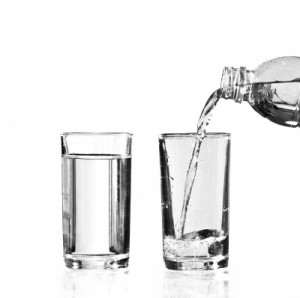 Unfortunately for Americans, it’s difficult to discern what type of water is safe to drink. Both tap water and bottled water certainly have their share of problems. It’s important for consumers to judge for themselves what’s acceptable.
Unfortunately for Americans, it’s difficult to discern what type of water is safe to drink. Both tap water and bottled water certainly have their share of problems. It’s important for consumers to judge for themselves what’s acceptable.
Tap water troubles
Over the past few years, Americans have learned more about what chemicals and toxins are routinely found in tap water. Regulated by the U.S. Environmental Protection Agency, many chemicals and toxins are permitted to stay in public water supplies. In 2005, the Environmental Working Group tested municipal water throughout the United States and found 260 contaminants in public water. Out of those 260 contaminants, 140 were unregulated chemicals – chemicals without any safety standards or removal methods.
Hundreds of toxins have no place in drinking water. Just four common contaminants include lead, arsenic, perchlorate and hexavalent chromium. Here’s why they’re so nasty for human consumption:
- Lead leaches to tap water through plumbing. It’s known to cause significant mental and physical delays in babies and children. It also can cause high blood pressure and kidney problems in adults.
- Arsenic contaminates drinking water supplies via agriculture, industry, or natural deposits in the earth. According to the U.S. EPA, “Non-cancer effects can include thickening and discoloration of the skin, stomach pain, nausea, vomiting; diarrhea; numbness in hands and feet; partial paralysis; and blindness. Arsenic has been linked to cancer of the bladder, lungs, skin, kidney, nasal passages, liver, and prostate.”
- Perchlorate, a component of rocket fuel that’s harmful to infant brain development and thyroid function, began contaminating water supplies after rocket and missile tests were conducted during the Cold War. The toxin is found in drinking water in at least twenty-eight states.
- Hexavalent chromium (also known as chromium-6) is a highly toxic form of chromium – but not all chromium is bad. In fact, trivalent chromium, or chromium-3, is an essential nutrient. Hexavalent chromium can enter the water system by contamination from textile and electroplating manufacturing factories. And, interestingly enough, chlorine has the ability to transform the harmless trivalent chromium into the harmful carcinogen hexavalent chromium, posing a challenge with chlorine-based water purification methods.
According to the Natural Resources Defense Council, one-fourth to one-third of all bottled water is actually municipal tap water. And some of that bottled water gets filtered and treated for parasites like giardia or cryptosporidium, but some does not.
Since there’s not as much testing with bottled water, it’s impossible for consumers to know if their bottled water comes from a municipal water source. It’s also impossible to know how rigorously the bottled water’s been tested.
What’s safe?
The absolute safest water to drink is distilled. In the distillation process, all contaminants and toxins are removed.
Note: This post originally was published in Jill Conyers’ blog, “Life As I See It,” on Aug. 13, 2011.
Photo credit
Latest posts by Hilary Kimes Bernstein (see all)
- The Day I Realized Healthy Choices Don’t Guarantee Health - July 21, 2015
- Avoid Synthetic Bug Sprays with All-Natural Repellents - July 16, 2015
- The Day I Learned I Could Cook Real Food - July 13, 2015
Do you have any suggestions/recommendations for a reverse osmosis filter? We’ve always had a water pitcher filter, but if it’s not doing much, then waht’s the point.
Simply wish to say your article is as surprising. The clarity in your post is just excellent and i could assume you are an expert on this subject. Well with your permission allow me to grab your feed to keep up to date with forthcoming post. Thanks a million and please continue the enjoyable work.
Thank you so much, Water Filters!
Mama D, unfortunately I don’t have any suggestions for reverse osmosis filters. Once my husband and I buy a new home, I’m sure I’ll do lots of research to find options for our family. I’ll share once I know more. :)